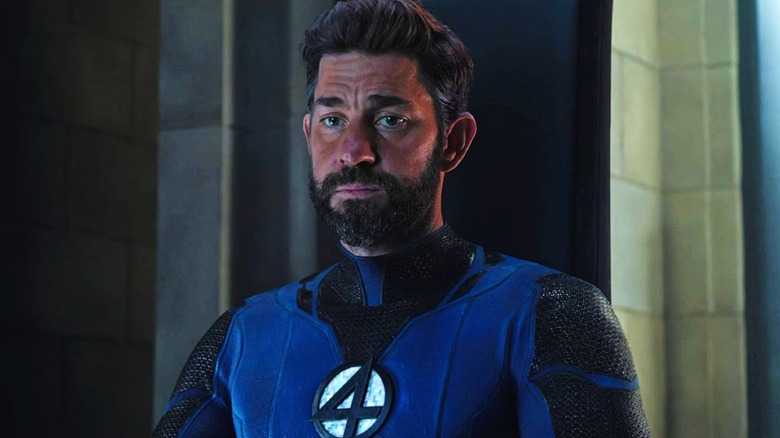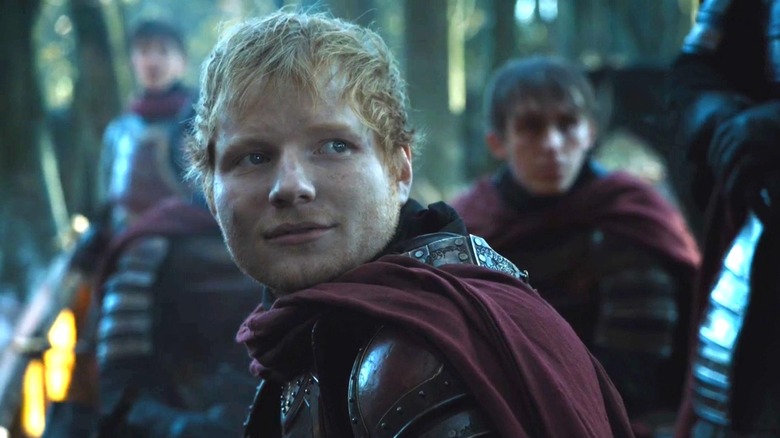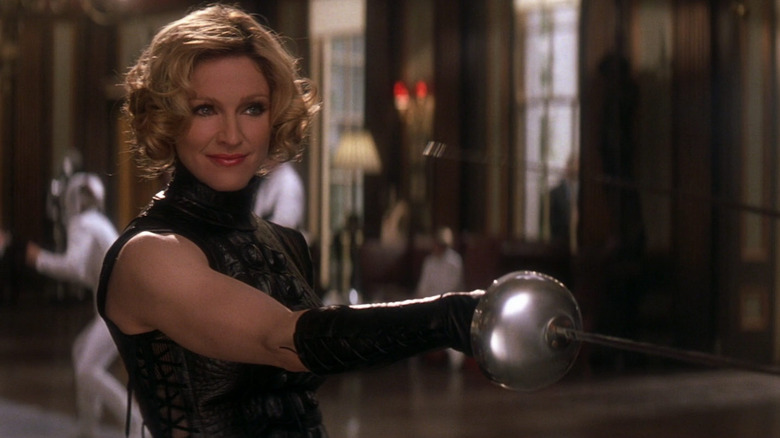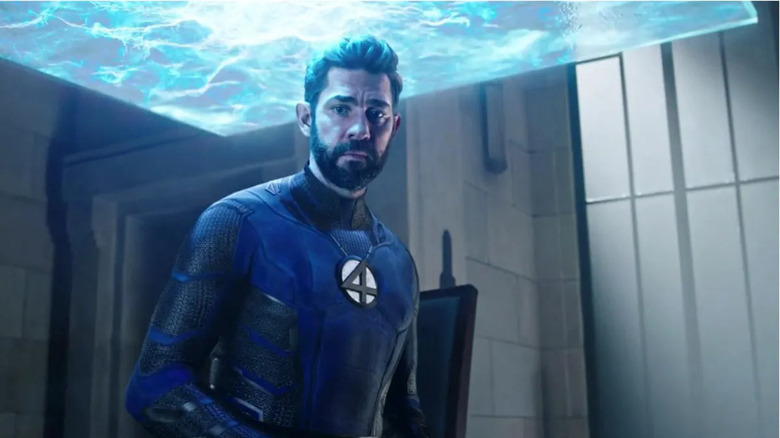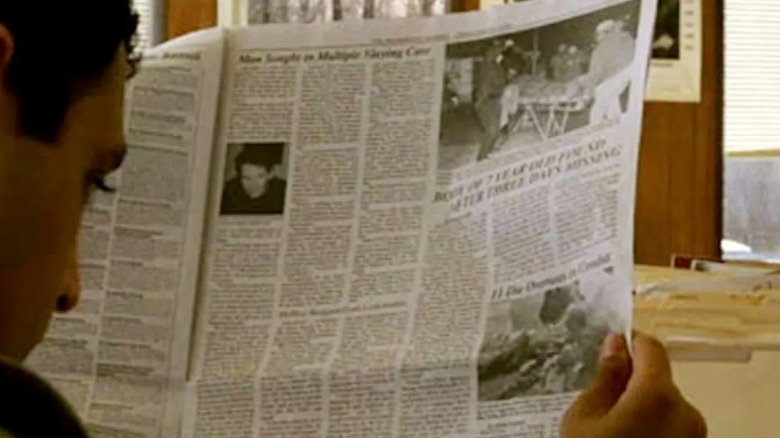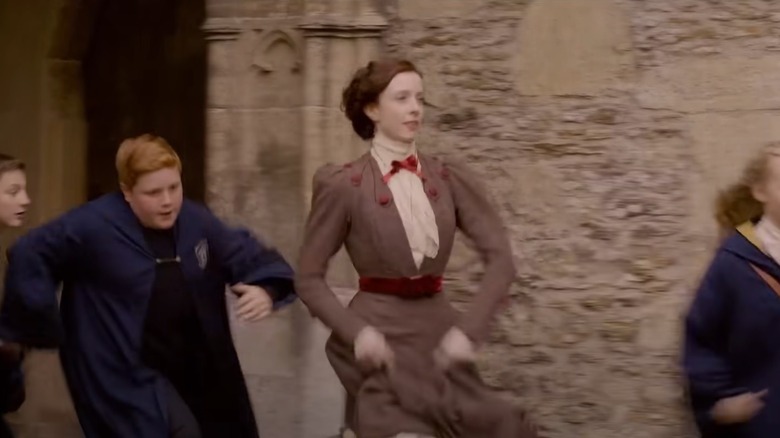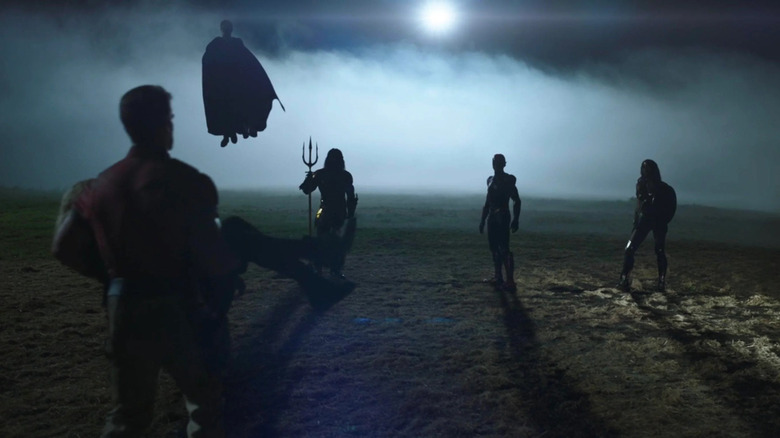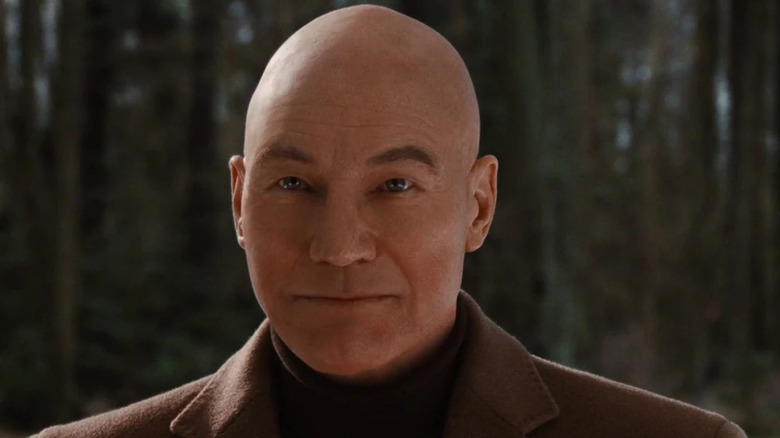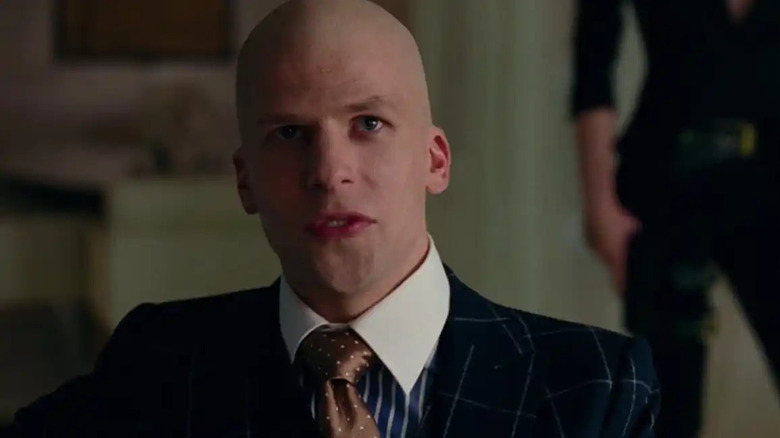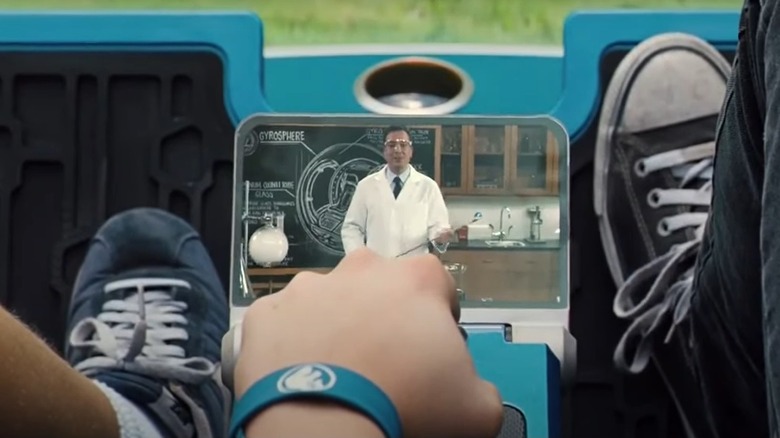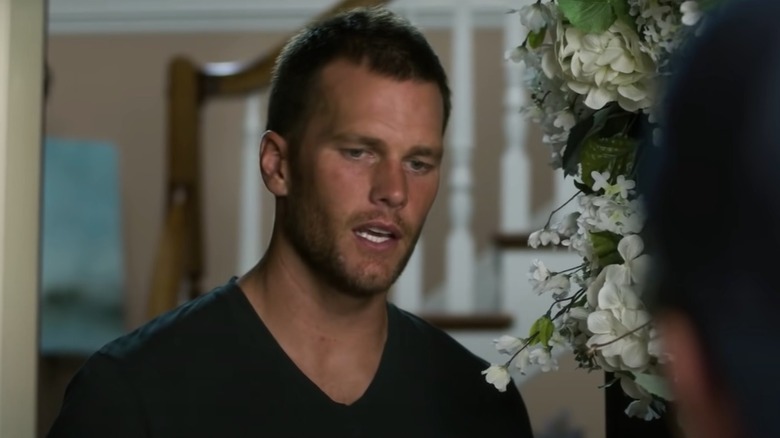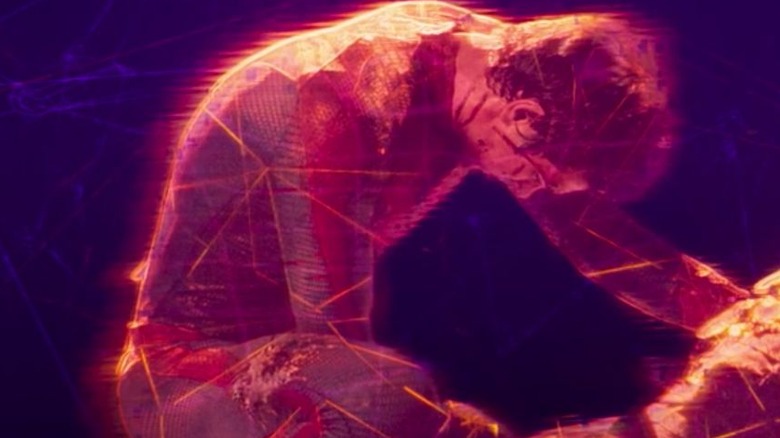Out-Of-Place Cameos That Just Didn't Work
Most audiences love a great cameo. When executed well, a cameo from a beloved actor, celebrity, or character can really enhance the story of a film or television show and create a crowd-pleasing moment that often comes as a shock to unsuspecting viewers. Cameos have always been popular in film and TV. Famous directors like Alfred Hitchcock and Quentin Tarantino have cameoed in the majority of their films and celebrity self-portrayal cameos have long been a staple of comedies. Major franchises from. the likes of Marvel and DC have also increased the popularity of character cameos, bringing in beloved heroes and villains from the source material for bit parts.
Of course, while a well-done cameo can elevate a project, a poorly integrated cameo can really bring a project down. Unfortunately, there are many such examples of the latter situation, with certain cameos famously hurting a project. Cameos can fail for a multitude of reasons. Sometimes it's due to a stiff or cringeworthy performance. Other times, a celebrity's inclusion may ruin a viewer's suspension of disbelief, or a character's appearance might create issues with a film's narrative or canon. Whatever the reason, these out-of-place cameos failed to do any favors for their respective projects, and it's likely these films or television shows would have been much better without them.
Ed Sheeran – Game of Thrones
Sometimes the biggest surprise cameos have nothing to do with the story or characters in a film or television show, but rather the actor portraying them. This was the case in the Season 7 premiere of "Game of Thrones." The episode, titled "Dragonstone," featured a scene in which series mainstay Arya Stark happens upon a group of Lannister soldiers singing a song that she'd never heard before. To the surprise of many viewers, the most prominent voice among the group belonged to singer-songwriter superstar Ed Sheeran. Sheeran's character is later revealed to be named Eddie, a name taken straight from the famed crooner himself.
Sheeran's performance in the brief scene wasn't bad. In fact, the bit of the in-universe song "Hands of Gold" that he sings sounds quite amazing. Unfortunately, it didn't matter whether his performance was good or not. "Game of Thrones" is a show that rarely, if ever, used stunt casting to surprise audiences. The show had a dark and serious tone, and the worldbuilding was done in a way meant to pull audiences into a believable and fleshed-out universe. Seeing Sheeran pushed many viewers out of the story and reminded them that they were watching a show affected by our own world and its creators (who'd welcomed other musicians to cameo with far less backlash).
Madonna – Die Another Day
"Die Another Day," the 20th film in the James Bond franchise, opened in 2002. Starring Pierce Brosnan as 007, it marked the final film in the franchise prior to the character's reboot in "Casino Royale." Not the most well-received Bond film, it holds a mere 55% critic score on Rotten Tomatoes. While there were a lot of issues with the film as a whole, one element that most fans agreed hurt the film was Madonna. In addition to Madonna singing the opening title song, she played a bit role as Verity, a fencing instructor who trains the film's villain, Gustav Graves.
To this day, Madonna is the only singer to also act in a Bond adventure. With the breaking of this tradition, one might think the cameo would have to be really impressive to warrant it. Unfortunately, this is not the case. In addition to Madonna's performance lacking any semblance of believability, the character's dialogue consists of one cheesy innuendo-filled line after another, such as "I see you handle your weapon well." The delivery lacks subtlety and Verity makes zero impact on the story. Thus, the whole scene feels like a waste of time.
John Krasinski – Doctor Strange in the Multiverse of Madness
Marvel film fans are no strangers to surprising cameos in the comic-book-inspired superhero flicks. However, "Doctor Strange in the Multiverse of Madness" was so packed with cameos that even many longtime fans were thrown for a loop. Most of the film's biggest cameos occurred during a scene where Doctor Strange is trapped in an alternate universe and meets the Illuminati, a group made up of some heavy hitters from Marvel comics, including Professor Xavier, Captain Carter, Black Bolt, Mordo, and Maria Rambeau as Captain Marvel. Arguably the most surprising was Reed Richards aka Mister Fantastic, played by John Krasinski. Unfortunately, his cameo was the one that worked the least well.
The sad part? Krasinski does a great job with the role during the few short minutes of screen time he has before being unceremoniously killed by Scarlet Witch. This not only upset Krasinski fans who felt that he deserved more screen time to develop his portrayal, but also fans of other "Fantastic Four" films. Out of the five members of the Illuminati, Krasinski's Mister Fantastic was the only non-legacy cast member. Patrick Stewart and Anson Mount reprised their roles as Charles Xavier from the Fox "X-Men" films and Black Bolt from "The Inhumans," respectively, while Lashana Lynch, Chiwetel Ejiofor, and Hayley Atwell reprised their MCU roles. Many fans wanted a legacy cast for Mister Fantastic, such as Ioan Gruffud or Miles Teller, to take on the role.
M. Night Shyamalan – The Village
Horror and suspense director M. Night Shyamalan loves to cameo in most of his films, following in path of many auteur-style directors, including Alfred Hitchcock and Quentin Tarantino. But while some of these cameos are small or well integrated into the story, others feel self-indulgent to the point of taking viewers out of the movie. In his early films, Shyamalan's cameos tend to be more well-done. For instance, in "The Sixth Sense" the director pops up as a pediatrician treating Haley Joel Osment's character Cole, and it was meant as a tribute to Shyamalan's parents, who are both doctors.
Later, his roles grew bigger and bigger, leading to a full-blown supporting role in "Lady in the Water," which painted him as a sort of savior figure. However, it was the cameo leading up to "Lady in the Water" that opened the door to Shyamalan's apparent savior complex. The director appears at the end of "The Village" as the boss of a park ranger who rescues the main character, Ivy. He helps the other ranger get her the medicine she needs. Shyamalan showing up to save the day feels too much like the director patting himself on the back, and it rubbed many audience members the wrong way.
Fiona Glascott – Fantastic Beasts: The Crimes of Grindelwald
"Fantastic Beasts: The Crimes of Grindelwald" finds itself on this list not because of an actor who appears in the film, but rather a certain character. The Harry Potter prequel film continues the tale of Newt Scamander, the protagonist of "Fantastic Beasts and Where to Find Them." During a scene in which Newt visits Hogwarts School of Witchcraft and Wizardry, he bumps into a young Professor Minerva McGonagall, Harry Potter's transfiguration professor and Head of Gryffindor house (Maggie Smith in the Potter films). "The Crimes of Grindelwald," casts Fiona Glascott as McGonagall and depicts her as a young professor at the school.
Unfortunately, this creates a major plot hole in the franchise's timeline. "Crimes of Grindelwald" takes place in 1927, and a lot of evidence from both the books and films suggests that McGonagall wouldn't have even been a student at the school until much later. In "Harry Potter and the Order of the Phoenix," McGonagall tells Dolores Umbridge that she had been teaching at the school for 39 years. Since "Order of the Phoenix" unfolds in 1995, this would place her start year around 1956, almost three decades before the events of "The Crimes of Grindelwald." Nevertheless, McGonagall would appear yet again in the following sequel.
Ezra Miller & Jason Momoa – Peacemaker
Initially set in the DC Extended Universe, or DCEU, "Peacemaker" shared its canon with many of DC's biggest films of the time, including "Justice League." The series takes full advantage of this during the final episode, which included a cameo that surprised many viewers. In the show, the Justice League themselves arrive to assist Peacemaker, only to find out that he'd already won the battle. While it may seem like a cameo from DC's biggest heroes would excite any DC Comics fan, there was one big problem: only Ezra Miller and Jason Momoa reprised their respective roles as the Flash and Aquaman.
This leads to a strange scene that features a CGI Superman and Wonder Woman standing in a lineup beside the Flash and Aquaman, while the latter two do all of the talking. The scene not only proved off-putting but viewers were quick to notice that Batman and Cyborg were missing from the lineup, which resulted in the production crew adding the final two members via CGI and reuploading the episode. Luckily, the brief banter between Aquaman and the Flash is still fun, but odd silence of the background CGI heroes just serves to remind audiences that are watching a show as beholden to actor schedules (and budget) as it is storytelling needs.
Dwayne Johnson – The Mummy Returns
Dwayne Johnson is one of the biggest stars in the world right now, with an impressive career and a charisma that elevates nearly every project. Of course, this wasn't always the case. Back in 2001, Johnson — still going professionally by his stage name, The Rock — was a successful wrestler only just landing his first film role. That film was "The Mummy Returns," the sequel to the popular reboot of "The Mummy" franchise starring Brendan Fraser and Rachel Weisz. In the film, Johnson plays a small but pivotal role as The Scorpion King.
Johnson appears twice, once at the beginning and once at the end. His cameo role starts out strong enough, with his portrayal of The Scorpion King during a narrated opening sequence feeling properly intimidating. However, the same cannot be said for his return during the film's third act. When the main villain, Imhotep, summons The Scorpion King, he returns as a giant creature that resembles a centaur, except half-human, half-scorpion. The character CGI is unconvincing and falls firmly into the uncanny valley. While Johnson couldn't outshine the bad CGI, everything worked out when he returned to portray the character in a prequel spinoff film titled "The Scorpion King."
Patrick Stewart – X-Men Origins: Wolverine
Patrick Stewart's Charles Xavier is arguably one of the most beloved portrayals in the "X-Men" franchise, if not superhero films as a whole. Still, as exciting as it is to see him in every film he appears in, when it comes at the cost of the story, or the canon of that story's universe, that cameo suddenly falls flat. This occurred with his appearance in "X-Men Origins: Wolverine." The film is a prequel to the first "X-Men" adventure and tells the untold story of Wolverine, including his childhood, and how he was inducted into the Weapon X program and lost his memory.
During the final sequence, Wolverine rescues a group of mutants from an experimentation program orchestrated by William Stryker, leader of the Weapon X program. As the group escapes from the facility, Xavier, in a surprise cameo appearance, helps rescue them. Unfortunately, this creates numerous questions and issues with the chronology. In the scene, Xavier is shown to still have the use of his legs in 1979, while "X-Men: First Class" shows him losing the ability to use them in 1962. In addition, his timely rescue would seem to indicate that he possesses knowledge of Stryker's experiments and program, something that was a mystery to him in the original "X-Men" trilogy.
Jesse Eisenberg – Justice League
Jesse Eisenberg may be a very talented actor, but his role as Lex Luthor in "Batman vs Superman" misfired with a lot of fans. The portrayal lacked the character's typical thoughtful nature and social and political charisma, instead landing more in the realm of the Joker's chaotic persona. Still, many fans held on to the idea that Eisenberg could play a great version of the character, with better writing and direction, and hoped to see him redeem the role down the line.
Sadly, that never came to pass. Eisenberg made only one other appearance in the official DCEU canon, a mid-credits scene at the end of "Justice League." In the scene, Lex Luthor meets with Deathstroke, another popular DC villain, and the two discuss creating their own villainous league. Eisenberg's Luthor does appear more reserved than his "Batman vs Superman" counterpart and bears a stronger resemblance to the character from the comics, but with no further appearances from either Luthor or Deathstroke, the scene ended up being a pointless tease to something that would go unexplored. Fans re-watching the film now will likely see it as nothing more than a disappointing reminder of all the storylines and characters they never got to see.
Jimmy Fallon – Jurassic World
"Jurassic World," the first film in the "Jurassic Park" franchise in nearly 15 years, managed to revitalize the property enough to spawn two sequels. The film centered around Isla Nublar, the location of the original Jurassic Park, which had finally been opened as a fully operational theme park named Jurassic World. Of course, as things do in a "Jurassic Park" film, this goes wrong and dinosaurs get loose and cause havoc in the park, leading to it being shut down. The film contains some surprising cameos, including Jimmy Buffett and Jimmy Fallon.
Fallon's inclusion was thanks to his ties with Universal Pictures, which owns NBC, where Fallon serves as the host of "The Tonight Show with Jimmy Fallon," as well as the "Jurassic Park" franchise. Fallon appears as himself during a scene where two of the protagonists ride a guided tour, showing up on their screen as the host of the tour, mimicking the videos that he did as the host of the Universal Studio Tour at Universal Studios. However, none of this makes sense in-universe. Universal would not have a stake in a dinosaur park in Costa Rica, turning Fallon's cameo into a meta reference rather a bit of worldbuilding. This only serves to pull viewers out of the fantasy and remind them that are watching a Universal Pictures film.
Tom Brady – Ted 2
When it opened in 2012, "Ted" was a surprise hit that managed to blend Seth MacFarlane's signature raunchy humor with a surprising amount of heart. The 2015 sequel attempted to recapture that magic but failed in more ways than one. "Ted 2" lacked the emotional core that made the first film so compelling, and instead doubled down on raunchy humor and pop culture jokes and references. This led to a cameo by NFL legend Tom Brady. Unlike the first film's popular cameo from "Flash Gordon" star Sam J. Jones, Brady's cameo fell flat.
In "Ted 2" the titular talking bear wants to have a baby with his girlfriend, but they are unable to conceive as Ted is, well, a teddy bear. So, Ted and his best friend John (Mark Wahlberg) come up with the idea to steal Tom Brady's sperm by breaking into his house as he sleeps. It's a weird scene already, but Brady's stiff performance makes it all the more uncomfortable to watch. In addition to the gross scheme, John and Ted spend a long time talking about how great Brady is, making the cameo-ing celebrity feel too worshiped by the film.
Andrew Garfield – Spider-Man: Across the Spider-Verse
In the third act of "Spider-Man: Across the Spider-Verse," Miguel O'Hara, also known as Spider-Man 2099, introduces a concept to hero Miles Morales called canon events. These events occur in the lives of every Spider-Man and spider-hero across every universe and involve the tragic loss of an individual close to them that allows them to mature and become the superhero they are meant to be. During the scene where Miguel explains canon events, he shows Miles glimpses of canon event moments in the lives of several variants of Spider-Man. But one of these stands out among the rest — for not fitting.
That variant is Andrew Garfield's Amazing Spider-Man. In the scene, Miles sees the moment from the first "Amazing Spider-Man" film in which Spider-Man witnesses the death of Captain George Stacy, the father of his girlfriend Gwen. Only, this scene doesn't really work as a canon event. Captain Stacy and Peter Parker were never particularly close, with Captain Stacy serving as an antagonist to Spider-Man for much of the movie. While the death is sad, it hardly feels like it would qualify as a life-changing canon event. In fact, Garfield's Spider-Man himself seemingly disputed the notion in "Spider-Man: No Way Home." During the scene where the Spider-Man variants discuss the tragic death that made them Spider-Man, Garfield's Spider-Man references Gwen Stacy's death, which makes much more sense as his canon event.
